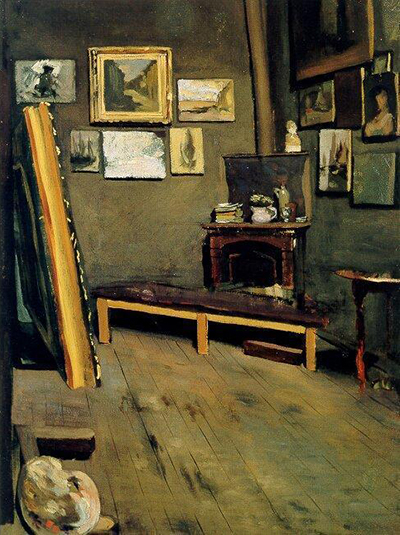French artist Frederic Bazille painted Studio of The Rue Visconti in 1867. The oil on canvas painting is of Bazille's studio in Paris' 6th Arrondissement, which he used between July 1866 and December 1867.
It is one of the paintings that some historians call 'indirect self-portraits' because they are a representation of Bazille's work as a painter. Over the span of his career, the artist occupied six studios around Paris.
Bazille came from a well-off family and was easily able to acquire studio space for his work. He usually shared his studios with some of his struggling friends such as Renoir, Monet and Sisley. Studio of The Rue Visconti paints a picture of the modest space complete with the pieces Bazille was working on at the time. It has dull colours of greys and browns. From the point of the spectator, it appears as if Bazille was standing at the door, looking in. From that vantage point, he frames the room perfectly.
At the corner of the room is what looks like a wooden stand or cupboard. On top of it is a flower vase with flowers inside, a stack of books, a jug and glass. A wooden bench with maroon cushioning is set in front of this arrangement. On the left side of the room, an easel is leaning on the wall, and a short distance from it is an artist's palette with a few colours mixed on it. The wall is covered with the artist's pieces - more than ten. It's hard to make out the exact paintings shown in Studio of The Rue Visconti.
Although coloured in shades of brown and gold, the studio has an inviting warmth to it. Bazille added several other hues to offer some contrast. The mahogany of the stand and maroon of the bench top light up the place a little bit. Bazille's artwork hanging on the wall shows the incredible range of his subjects from landscapes to portraits. Jean-Fredéric Bazille died young and, therefore, a lot was not known about him. The paintings he did of his studios like this one provided some idea.
Studio of The Rue Visconti is in loose brush strokes and great attention to detail. The spectator can see almost everything about the room and imagine walking on the bare wooden floor. This painting is a context of how Bazille lived and painted.




